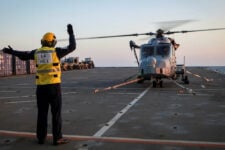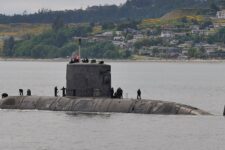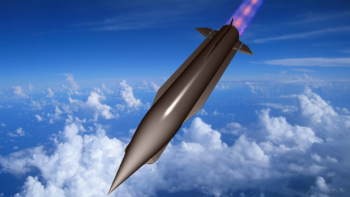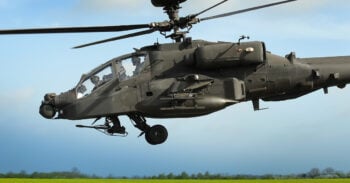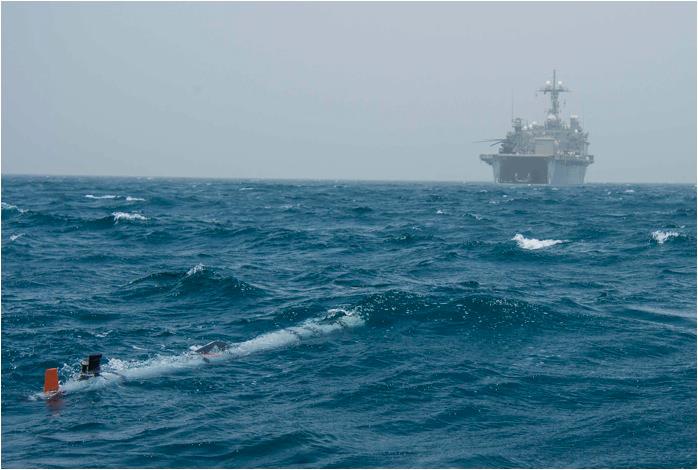
An unmanned underwater vessel (UUV) astern of the USS Ponce in the Persian Gulf
WASHINGTON: Unmanned underwater vehicles will scatter anti-submarine mines as a new way to protect US Navy ships at sea, part of a larger push to screen the fleet from increasingly sophisticated Chinese and Russian subs prowling the seas.
This marks an important shift in US naval warfare, as the head of the Navy’s mine warfare division, Capt. Chris Merwin, outlined at a conference last year. “Basically we have Quickstrike mines, air-delivered dumb bombs, and we have a few submarine-launchable mines. That is what we have now,” but “that is changing big time.”
The future “of mining,” Merwin said, will be [unmanned underwater vehicle] clandestinely-launched mines,”
Earlier this month, the service held a virtual industry day to discover what technologies companies might be able to deliver for its Hammerhead program which, if successful, would deploy UUVs to spread canisters containing Mk46 anti-submarine torpedoes to critical areas to screen American submarines and ships.
Head of the Unmanned and Small Combatants office, Rear Adm. Casey Moton, said in a release today the industry day was meant to “stress the importance of the program to the fleet – they want it today, they need it today.”
But they won’t have it today. Or tomorrow.
The plan calls for up to 30 prototypes to be delivered in fiscal 2021, with delivery of what the Navy calls “operationally relevant prototypes” by the end of fiscal 2023. The industry day was attended by 16 companies.
That’s a bit of a wait for a program which kicked off in 2018 and has been classified a Middle Tier Acquisition Rapid Prototyping Program and a Navy Maritime Accelerated Acquisition, meaning the Navy wanted to develop the capability quickly.
Anti-submarine warfare (and mine warfare) was relegated to the back burner after the fall of the Soviet Union, a time when the rise of China was barely a consideration and the need to defend against hostile submarines seemed less and less likely. But Russia’s modernization of its submarine fleet, along with the growing Chinese capability overall, has led to scrambling inside the Navy to rebuild those once formidable defenses and countermeasures.
The push has also been spurred by the flameout of the anti-sub capabilities of the Littoral Combat Ship, which never delivered as promised. The need was underscored in the service’s 2020 unfunded priorities list, which included $71 million for the Quickstrike JDAM-ER, an underwater mine dropped from an aircraft.
A November 2019 request for information posted by the Navy to a contracting website called the Hammerhead “a moored-torpedo variant mine system for intermediate to deep depths that has the capability to detect, classify, and defeat Anti-Submarine Warfare (ASW) targets.” The configuration is slated to include a capsule to hold the torpedo, a mooring module, a power source, a sensor, and command, control and signal capabilities.
TAI exec claims 20 Turkish KAAN fighters to be delivered in 2028
Temel Kotil, TAI’s general manager, claimed that the domestically-produced Turkish jet will outperform the F-35 Joint Strike Fighter.


